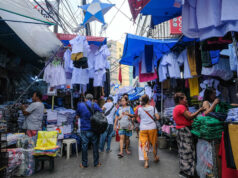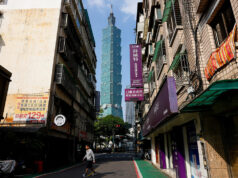Mindanao recovery must look beyond agricultural strength
TWO weeks into the more relaxed lockdown policy in the entire Mindanao, entrepreneurs of non-basic goods that have been allowed to resume operations have yet to see signs of business recovery.
Car accessories dealer Mercedes G. Duduaco, also president of the Philippine Marketing Association-Davao, said many businesses are weighed down by bills that are piling up and the slow return of customers, among other concerns.
“This is our second week of operation. Hoping that there will already be customers, but (there’s) still none. Maybe because many still fear being infected by people who are asymptomatic (carriers of the coronavirus),” she said in an online interview.
“For almost three months now we are under quarantine and lockdown, the bills are coming, utility bills, loans, bank interest, everything is compounding plus all the supplies that we got from the suppliers are now overdue. Where will we get the money to pay? There are no sales and income,” she said.
Fermin D. Adriano, a member of the Asian Development Bank Institute Advisory Council, puts the situation plainly: “This is going to be a very difficult recovery.”
“Jobs have been lost… loss of jobs means loss of income. You don’t have demand, even in agricultural products,” Mr. Adriano, who also serves as special adviser to the Agriculture secretary, said during a May 29 webinar on the Mindanao economy organized by the European Chamber of Commerce and Industry and the Davao City Chamber of Commerce and Industry.
He cited as an example an oversupply of chicken with the closure of restaurant chains.
Mindanao accounts for over 33% of the country’s farming and fisheries production, and about 60% of income from agricultural exports with banana and coconut as top commodities.
Within Mindanao, however, the agriculture sector contributes only 18% to the regional economy, lower than the industrial sector at 36%.
The highest share at 46% comes from the services sector, which covers labor, skills, and technology.
Jeffrey Leocario, owner of signage maker Wallmount Advertiser, said apart from stopping production for two months, border closures have also prevented them from making deliveries.
“All our projects are outside Davao City, then my business is considered non-essential, so entry and exit per local government was a problem. When it comes to clientele, since we are handling corporate accounts, for two months we stopped all production. We were not prepared for that,” he said.
Philippine Chamber of Commerce and Industry Vice-President for Mindanao Ma. Teresa R. Alegrio, in the same webinar, said while the private sector recognizes agriculture as a strength of the southern islands and will be crucial in reinvigorating the economy as well as ensuring food security, they are also looking beyond food crops for broader development.
“On the way to recovery…there are several things that we are considering here, but it’s really more of looking at what resources we have now that we can optimize, I’m talking here not only of agricultural products but even industrial crops that can be used by manufacturing companies for diversification,” she said.
She cited commodities like rubber for medical supplies, sugar cane for ethyl alcohol, and abaca for face masks.
Mindanao Development Authority (MinDA) Executive Director Romeo M. Montenegro said as consumers are expected to limit spending to essentials such as food, medicine, transport, and connectivity, Mindanao should move towards localizing supply chains and develop multiple providers.
“What we’re seeing is for Mindanao to look at the direction of being able to produce all of these… Right now, 70-80% of basic necessities we are consuming here are derived from Luzon,” Mr. Montenegro said.
Luzon, which includes the National Capital Region, accounts for an average 73% of national production in the last 10 years.
Economist Cielito F. Habito, who served as socioeconomic planning secretary under the Ramos administration, said while it will undoubtedly be a “rough ride” ahead, the coronavirus crisis “can be taken advantage of to really have fundamental changes for a better new normal.”
And this new normal, he said, includes “more geographically dispersed economic activities so that Manila and its surrounding provinces are not the dominant areas of production in the country, and we’d like to see more of it in Mindanao, obviously.” — Maya M. Padillo and Marifi S. Jara



